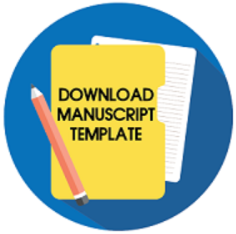Utilizing Wordwall Puzzles as Teaching Materials for Theme 3 in Fifth Grade
Downloads
Downloads
Ahmad, I., & Jaafar, A. (2012). Computer games: Implementation into teaching and learning. Procedia - Social and Behavioral Sciences, 59, 515–519. https://doi.org/10. 1016/j.sbspro.2012.09.308.
Aji, I. A. B., & Pujiastuti, P. (2022). Development of natural science supplement books based on local wisdom in integrative thematic learning in the elementary schools. Jurnal Prima Edukasia, 10(1), 82–95. https://doi.org/10.21831/jpe.v10i1.40173.
Andini, D. W., Annisa, F. Y., Praheto, B. E., & Taryatman, T. (2023). The development of the sariswara method in accommodating the students' diversity in thematic learning material of elementary school. Jurnal Prima Edukasia, 11(1), 72–80. https://doi.org/10.21831/jpe.v11i1.53254
Anggito, A., & Sartono, E. K. E. (2022). The development of multicultural education comics to embed tolerance character for 4th grade of elementary school. Jurnal Prima Edukasia, 10(1), 66–81. https://doi.org/10.21831/jpe.v10i1.40504
Anagí¼n Assoc, Åž. S., & Osmangazi íœniversitesi, E. (2018). Teachers' Perceptions about the Relationship between 21st Century Skills and Managing Constructivist Learning Environments. In International Journal of Instruction (Vol. 11, Issue 4). www.e-iji.net
Anjani, D.A., NurJanah, S. 2014. Puzzle games influence the development of visual-spatial intelligence in children aged 4-5 years at Al-Fath Kindergarten, Keboan Anom Village, Gedangan, Sidoarjo. Jurnal Ilmiah Kesehatan. 7(2). 186-192. https://doi.org/10.33086/jhs.v7i2.507.
Ardi. (2018). Create a Book with FlipBook. HTML5. https://fliphtml5.com/boxgo/xlwm/basic
A'yun, N. Q. (2018). Development of si pintar interactive media based on android applications kpk and fpb material for mathematics class iv elementary school. JPGSD. 6(2), 47–56. https://ejournal.unesa.ac.id/index.php/jurnal-penelitian-pgsd/article/view/23410/21404.
Aziz, M. K. (2015). Development of android-based learning media to increase student participation and learning outcomes in pai subjects. Skripsi. UIN Sunan Kalijaga.
Basuki, A., & Kurniawan, R. (2022). The effectiveness of career information services with cev media on elementary school students. Jurnal Prima Edukasia, 10(2), 180–186. https://doi.org/10.21831/jpe.v10i2.49963
Byun, H. S., Choi, J. L., & Song, J. S. (2016). Research on the development of electronic textbook prototypes. Journal of Korean Educational Technology, 22(4), 1e24. http://dx.doi.org/10.17232/KSET.22.4.217
Chen, L. X., & Sun, C. T. (2016). Self-regulation influence on game play flow state. Computers in Human Behavior, 54, 341–350. https:doi.org/10.1016/j.chb.2015.08.020.
Gaspar, D., & Mabic, M. (2015). Creativity in higher education. Universal Journal of Educational Research, 3, 598–605. https://eric.ed.gov/?id=EJ1074814
Hermanto, H. (2022). The teacher performance evaluation in learning management in inclusive settings. Jurnal Prima Edukasia, 10(1), 28–36. https://doi.org/10.21831/jpe.v10i1.37511.
Hung, P. H., Hwang, G. J., Lee, Y. H., & Su, I. (2012). A cognitive component analysis approach for developing game-based spatial learning tools. Computers & Education, 59(2), 762–773. https://doi.org/10.1016/j.compedu.2012.03.018.
Hwang, G. J., Hsu, T. C., Lai, C. L., & Hsueh, C. J. (2017). Interaction of problem-based gaming and learning anxiety in EFL students' English listening performance and progressive behavioral patterns. Computers & Education, 106, 26–42. https://doi.org/10.1016/j.compedu.2016.11.010.
Kao, Y. M., Chiang, C. H., & Sun, C. T. (2017). Customizing scaffolds for game-based learning in physics: Impacts on knowledge acquisition and game design creativity. Computers & Education, 113, 294–312. https://doi.org/10.1016/j.compedu.2017.05.022.
Lin, H., & Vartanian, O. (2017). Neuroeconomics and creativity: A neuroeconomic framework for creative cognition, Vol. 184754https://doi.org/10.1101/184754.
Liu, Y. C., Chang, C. C., Yang, Y. S., & Liang, C. (2018). Spontaneous analogising caused by text stimuli in design thinking: Differences between higher- and lower- creativity groups. Cognitive Neurodynamics, 12, 55–71. https://doi.org/10.1007/s11571-017-9454-0.
McMahon, G., Yeo, S., & Williams, M. (2011). Making a difference: Student perceptions of E-learning blended with traditional teaching methods. In C. Ho, & M. Lin (Eds.). Proceedings of E-learn 2011–World conference on E-learning in corporate, government, healthcare, and higher Education (pp. 759–764). Honolulu, Hawaii, USA.
Moreno, R., & Mayer, R. (2011). Interactive multimodal learning environments. Educational Psychology Review, 19(3), 309e326. https://link.springer.com/article/10.1007/s10648-007-9047-2.
Nelson, L. L., Arthur, E. J., Jensen, W. R., & Van Horn, G. (2011). Trading textbooks for technology: New opportunities for learning. Phi Delta Kappan, 92(7), 46e50. http://dx.doi.org/10.2307/25822837.
Novita, L., Guru Sekolah Dasar, P., Pakuan Bogor, U., & Novianty, A. (2019). The influence of the use of animated audio visual learning media on learning outcomes of single and mixed object subthema. In JTIEE (Vol. 3, Issue 1). http://dx.doi.org/10.30587/jtiee.v3i1.1127.
Pah, M. (2016). Pengembangan media pembelajaran berbasis ICT mengacu kurikulum SD 2013 subtema bersyukur atas keberagaman untuk siswa kelas IV Sekolah Dasar Negeri Kalasan I. Tesis. Universitas Sanata Dharma.
Perrotta, C., Featherstone, G., Aston, H., & Houghton, E. (2013). Game-based learning: Latest evidence and future directions (NFER research programme: Innovation in education). Slough: NFER.
Seon, B. G., Seo, Y. K., & Byun, H. S. (2014). Case investigation research of Korea and foreign digital textbooks (RR2004e05). Retrieved from http://www.keris.or.kr/ board/pb_downloadNew.jsp?bbs_num1â„41784&ix1â„43019.
Sun, P. C., & Cheng, H. K. (2007). The design of instructional multimedia in e-Learning: A Media Richness Theory-based approach. Computers and Education, 49(3), 662–676. https://doi.org/10.1016/j.compedu.2005.11.016
Wahyu P., D., Nugroho, A. P., & Puspitarini, E. W. (2016). Android-based educational games as learning media for early childhood. Jurnal Informatika Merdeka Pasuruan, Vol 1(ISSN. 2502-5716). http://dx.doi.org/10.51213/jimp.v1i1.7
Yeh, Y., Lai, G. J., Lin, C. F., Lin, C. W., & Sun, H. C. (2015). How stress influences creativity in game-based situations: Analysis of stress hormone, negative emotions, and working memory. Computers & Education, 81, 143–153. https://doi.org/10.1016/j.compedu.2014.09.011.
Yeh, Y. (2017). Research development of creativity. In J. Stein (Ed.). Reference module in neuroscience and biobehavioral psychology. Elsevier.
Yeh, Y., Lai, S. C., & Lin, C. W. (2016). The dynamic influence of emotions on game-based creativity: An integrated analysis of emotional valence, activation strength, and regulation focus. Computers in Human Behavior, 55, 817–825. https://doi.org/10.1016/j.chb.2015.10.037.
Copyright (c) 2024 Jurnal Prima Edukasia

This work is licensed under a Creative Commons Attribution-ShareAlike 4.0 International License.
The copyright of the received article shall be assigned to the journal as the publisher of the journal. The intended copyright includes the right to publish the article in various forms (including reprints). The journal maintains the publishing rights to the published articles.

Jurnal Prima Edukasia by http://journal.uny.ac.id/index.php/jpe/index is licensed under a Creative Commons Attribution-ShareAlike 4.0 International License.


























